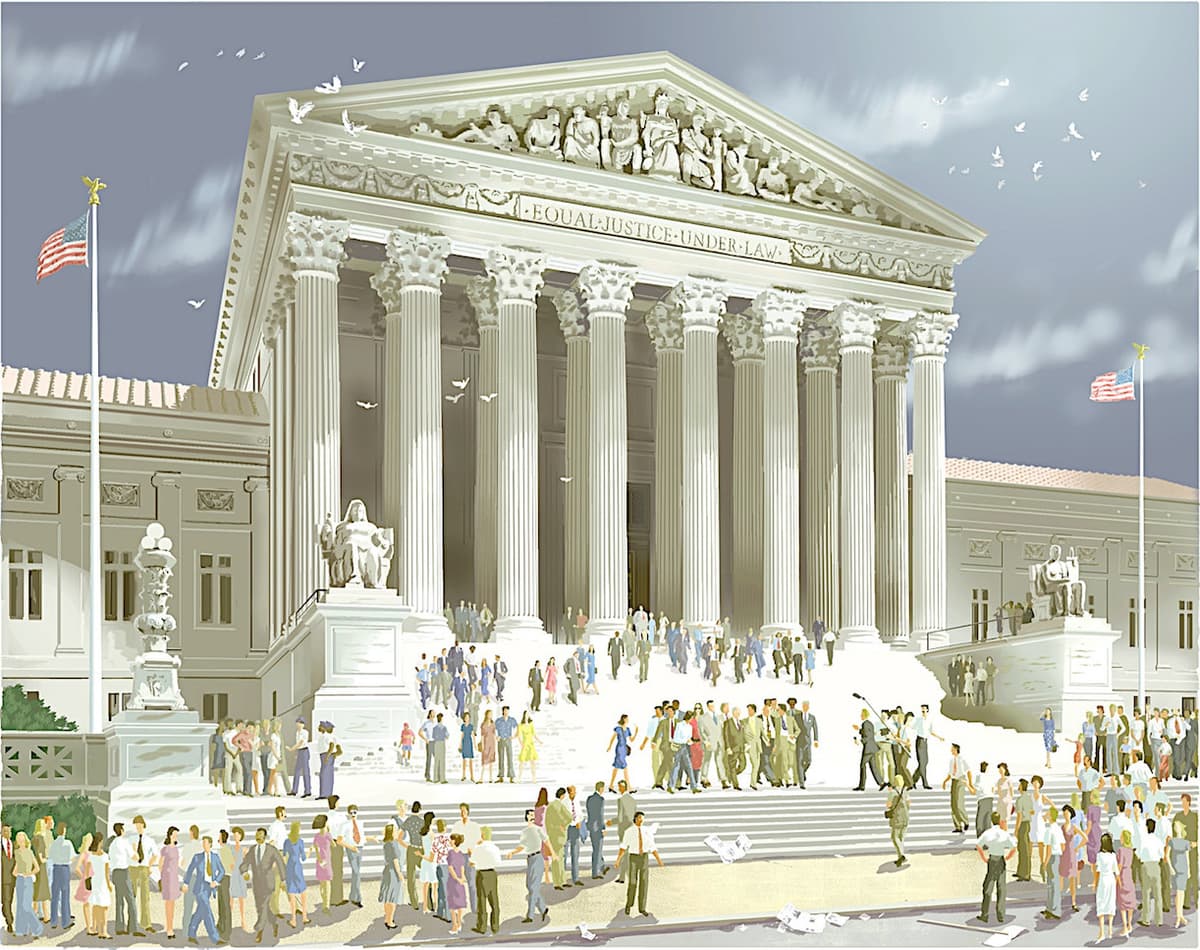Targeting the ‘Imperial’ Supreme Court
Where a legal sage sees a gathering of power, we see its dispersal. This conservative court has returned authority to the ‘people and their elected representatives.’

It might be scant surprise that the Supreme Court is the target of broadsides these days, but it could come as a shock to see one such potshot launched from the pages of the Harvard Law Review. Its author is a Stanford Law professor, Mark Lemley, whom the school touts as the most cited professor in the law of intellectual property and “one of the ten most cited legal scholars of all time.” The sage accuses the court of being a Machiavellian hoarder of power.
Professor Lemley’s “The Imperial Supreme Court”* strikes us as inaccurate. He spots the “emergence of the imperial Supreme Court” engaged in a “radical restructuring” of American law. The justices, he asserts, are working at “stripping power from every political entity except the Supreme Court itself” to “concentrate power” at the high court. He essentially doubts the justices’ integrity, accusing them of, in effect, a coup.
We, too, detect a shift in the balance of power, but where Mr. Lemley sees a gathering of power, we see its dispersal. In case after case, this conservative court has insisted on returning constitutional authority to what Justice Samuel Alito in Dobbs v. Jackson Women’s Health calls the “people and their elected representatives.” Abortion is just one issue where decision making authority now resides within the democratic process, rather than beyond it.
Mr. Lemley concedes that “this in turn might seem to shift power to the states” and that Dobbs does “give power to state governments, albeit at the expense of individual rights.” That is exactly right, and in the wake of Dobbs there has been in respect of abortion an efflorescence of decision making from ‘We the People,’ from Kentucky to Michigan to California. By all accounts, Dobbs spurred voter passion, reminding Americans of the force of their franchise.
The professor cites another case from last term, West Virginia v. EPA, which held that on “major questions” agencies like the EPA are required to point to “clear congressional authorization” for regulatory authority. Mr. Lemley labels this a “powerful step to limit agency power” — and it is that — but if constitutional capital is being reallocated, it is to Congress, not the court. If the legislature does not quite know what to do with it, that is its failing.
Mr. Lemley also invokes a case from this term, Moore v. Harper, which turns on whether the national parchment assigns exclusive responsibility over federal elections to state legislatures. If that position, argued by Republican state lawmakers, triumphs, it is state courts that will be sidelined. Mr. Lemley calls that possibility “remarkable intrusion on state legal process.” Fair enough, but it is certainly not an aggrandizement of the high court, or any court.
To cut the “imperial” court down to size, Mr. Lemley expresses a willingness to entertain “radical fixes,” including curtailing its jurisdiction and packing its ranks. The “ship has sailed” on its legitimacy, he claims, and so anything goes. It appears as if it is Mr. Lemley and the liberal legal establishment who are preparing to wheel on the court. It would be an irony if this court’s returning power to the people is read as an invitation to aggression.
__________
* The article is well reported by Adam Liptak in the New York Times.

